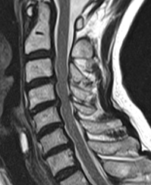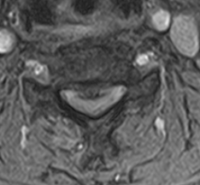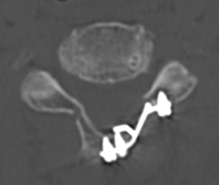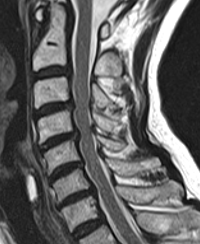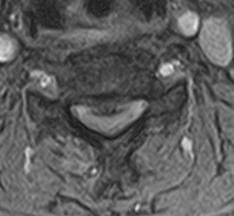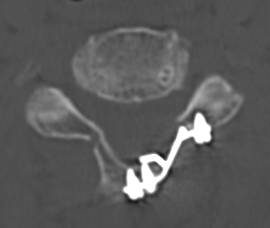Cervical Spondylotic Radiculopathy and Myelopathy (Cervical Myelopathy)
04/05/2022
最終更新日時 :
03/10/2024
 webmaster
webmaster
We will provide information on the surgical methods for cervical spondylotic radiculopathy and cervical spondylotic myelopathy (cervical myelopathy), as well as details regarding the length of hospital stay and whether the procedures are covered by insurance.
Cervical Spondylotic Radiculopathy and Myelopathy (Cervical Myelopathy)
What are Cervical Spondylotic Radiculopathy and Cervical Spondylotic Myelopathy (Cervical Myelopathy)?
Cervical spondylosis refers to the degenerative changes in the cervical vertebrae (cervical spine) that occur with aging. This condition involves damage to the vertebrae or intervertebral discs, leading to the formation of bone spurs (osteophytes) or cartilage growth.
Symptoms
When bone spurs (osteophytes) compress the nerve roots, it can cause pain in the shoulder blade area and upper limbs. If symptoms such as numbness or pain in the arms and legs, motor paralysis, or urinary difficulties occur, spinal cord compression may be suspected. Early medical evaluation is necessary in such cases.
Treatment Methods
To diagnose the condition, X-rays are used to examine the location and size of the bone spurs, while MRI and CT scans are necessary to assess the extent of spinal cord and nerve symptoms, as well as any spinal cord deformities.
For mild symptoms such as numbness, sensory disturbances, or pain, treatment may involve medication and observation. However, if symptoms do not improve and are accompanied by motor paralysis or muscle weakness, surgery may be required.
For mild symptoms such as numbness, sensory disturbances, or pain, treatment may involve medication and observation. However, if symptoms do not improve and are accompanied by motor paralysis or muscle weakness, surgery may be required.

Surgical Methods
Surgery is broadly categorized into two methods based on the size and location of the factors compressing the spinal cord:
Anterior Approach (Anterior Decompression and Fusion): This method involves accessing and treating the herniated disc from the front of the neck.
Posterior Approach (Posterior Decompression and Expansion of the Spinal Canal): This method involves accessing and treating the herniated disc from the back of the neck.
If there is instability in the cervical spine, such as slippage, or if there are alignment issues, additional fixation procedures may be necessary. In either case, these are highly specialized surgeries, so please consult with our clinic for more information.
